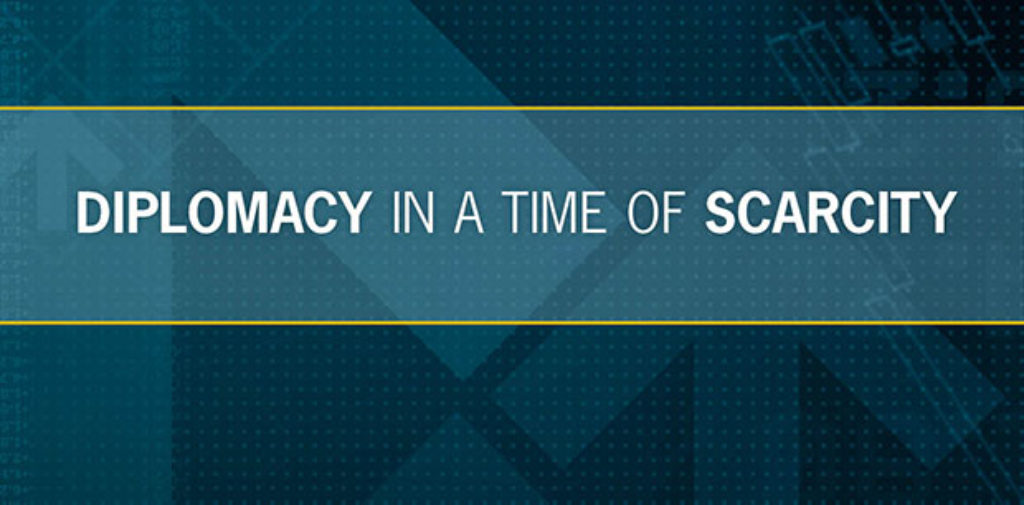The United States faces unprecedented challenges in conducting diplomacy and development as it responds to the residuals of three wars and a constantly changing global environment. At the same time, the outlook for the entire federal budget has changed dramatically. A new era requiring increased fiscal austerity has emerged, and it threatens to not only end recent International Affairs personnel expansion but erode recent gains before the needed improvements have been realized or new missions have been absorbed. In the face of these challenges, the most valuable resource Americans have in their foreign affairs engagement is the men and women of the Department of State and USAID.
To understand what today’s fiscal crisis means for the personnel of US foreign policy, The American Academy of Diplomacy and Stimson, funded by the Cox Foundation, present a new study, “Diplomacy in a Time of Scarcity,” that examines the challenges of the world today and the progress in preparing our foreign policy personnel for those challenges. Our analysis found that our diplomatic capacity has seen significant gains in the last four years and over the last decade but that these gains should not be overstated. They represent efforts to address long-standing deficiencies and shortages, and have not readied our diplomatic capacity for the challenges we already faced, let alone set us to proactively engage the changing challenges of tomorrow’s world.
Today, our diplomatic capacity, on which the security of the American people will depend in the tumultuous decades of the 21st century, is not yet completely staffed, trained, and deployed to meet the challenges. Our recommendations are designed to close the remaining gaps in personnel and training.
Recommendations
1. The Secretary of State should seek to complete the Diplomacy 3.0 staffing initiative in the FY 2014 budget. This would add 722 positions, achieving the targeted 25 percent increase in the Foreign Service compared to the 2008 baseline. These positions should be distributed across Core and Public Diplomacy in order to bring personnel in these areas closer to the 2008 FAB report’s recommendations.
2. In order to alleviate shortages in mid-career officers, the Department should press Congress for legislation to temporarily lift limitations on pay and numbers of hours worked for While Actually Employed (WAE) retired officers and staff for a period of five years.
3. The Secretary of State should seek an additional (above attrition) 490 positions specifically for long-term training in the FY 2014 budget: 330 for language training to meet Congressional requirements and 160 for training to reach mid-level needs.
4. The Department should fund a study of what would be required for the Foreign Service Institute (FSI) to take on a share of senior professional education comparable to the National Defense University and the Service War Colleges.
5. USAID should recruit as needed and on a targeted basis experienced personnel including retired USAID officers to address shortages of mid-career officers.
6. USAID should seek streamlined hiring authorities to rationalize the unnecessarily convoluted methods currently employed.
7. Congress should appropriate the Department’s 2013 budget request for full Bureau of Conflict and Stabilization (CSO) staffing with a flexible hiring authority and dedicated funding proposed by the Department to increase the effectiveness and agility of the CSO’s new model. If there is no regular budget for 2013, CSO should pursue this goal in FY 2014.
8. The Department should task CSO to make recommendations on how to respond to civilian surge scenarios that exceed planned CSO capabilities now that the creation of a large “surge capability” is no longer planned. This study should include, inter alia, the functioning of the current 3161 authority (for temporary hires), whether additional standby authority is needed, potential changes in contracting authority or spending flexibility for a large surge, and the potential for maintaining a larger roster of skills in the civilian sector.
Now, more than ever, the United States needs to be fully engaged in all areas of the world-and to achieve this will require a broad effort. The better the Shield, the less often the Sword is required.

